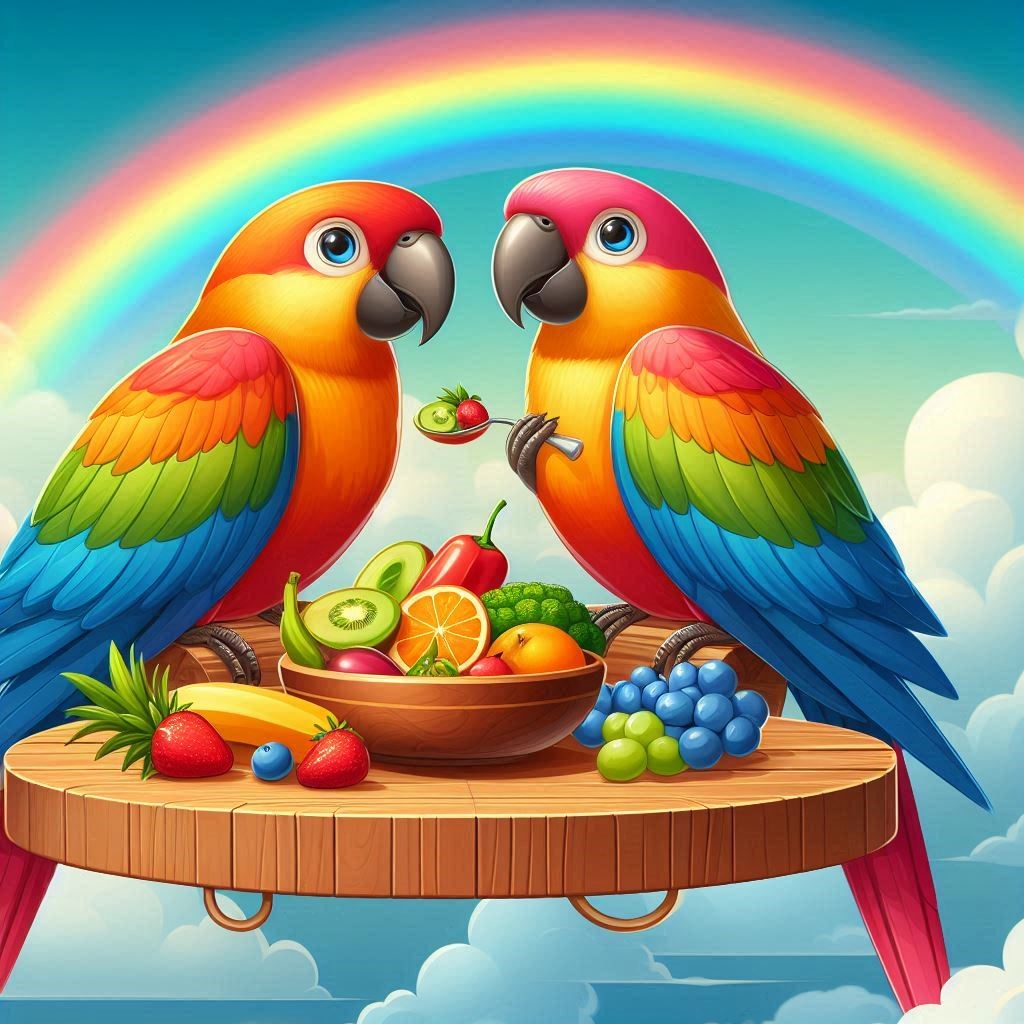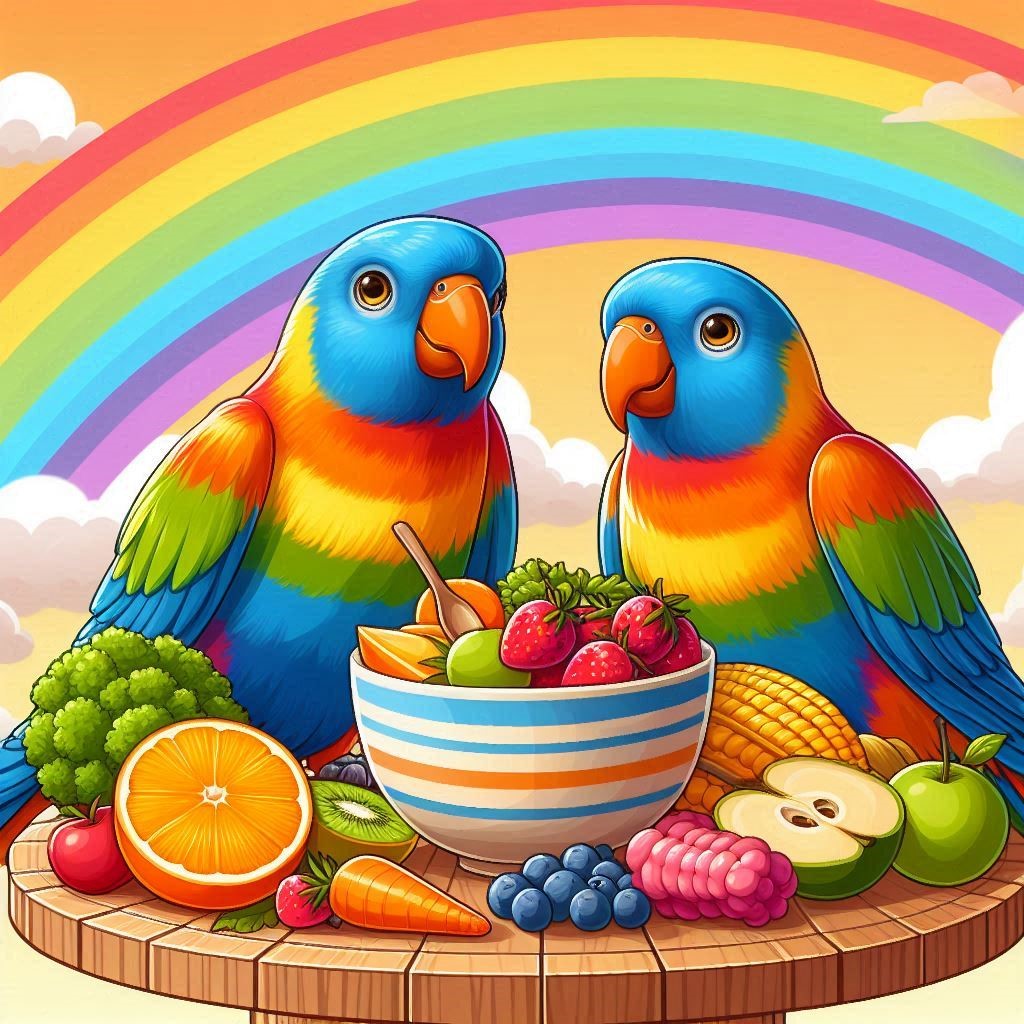Parrot Diets
When it comes to our feathered companions, understanding what they eat can be a delightful journey. Parrots, with their vibrant plumage and playful personalities, deserve a diet that mirrors their lively nature. But what do parrots eat? This question is essential for every owner who wants to ensure the health and happiness of their avian friend.
In the wild, these intelligent birds feast on an array of seeds, fruits, nuts, and even blossoms — all packed with nutrients vital for their well-being. However, translating this diverse menu into your home feeding routine can feel overwhelming at times.
Join us as we explore authentic parrot diets! We’ll dive deep into the importance of balanced nutrition while uncovering common ingredients you should include or avoid in your bird’s meals. Whether you’re a seasoned parrot parent or just beginning your adventure in aviculture, there’s something valuable here for everyone looking to enrich their pet’s diet!
The Importance of a Balanced Diet for Parrots
A balanced diet is crucial for your parrot’s health and well-being. Just like humans, these vibrant birds thrive on a variety of nutrients.
Parrots require essential vitamins, minerals, and proteins to support their immune system. A deficiency can lead to serious health issues, such as feather plucking or lethargy.
Colorful fruits and vegetables should be staples in their diet. Dark leafy greens are particularly beneficial, offering important antioxidants.
Pellets specially formulated for parrots provide a solid base but shouldn’t be the sole source of nutrition. Fresh food enhances their diets with natural enzymes that boost digestion.
It’s also important to consider portion sizes. Overfeeding can lead to obesity while underfeeding may cause malnutrition.
Creating a diverse menu keeps mealtime exciting while ensuring they get all necessary nutrients. By focusing on balance, you’re setting your parrot up for a long and healthy life filled with chirps of joy!
Commonly Used Ingredients in Parrot Food
When it comes to parrot food, a variety of ingredients play crucial roles in their nutrition. Seeds are often the first thing that comes to mind. They provide essential fats and protein but should never be the sole diet.
Pellets have gained popularity among parrot owners for good reason. These formulated foods contain balanced nutrients tailored to meet your bird’s dietary needs.
Fresh fruits and vegetables are vital too. Items like apples, carrots, and leafy greens offer hydration as well as vitamins and minerals.
Nuts can also make an excellent addition but should be given sparingly due to their high-fat content.
Herbs like basil or parsley can enhance flavor while introducing additional health benefits. Each ingredient adds something special, creating a colorful mix that’s both appealing and nutritious for your feathered friend.
Foods to Avoid Feeding Your Parrot
Not all foods are suitable for your feathered friend. Some can be toxic or harmful. It’s crucial to know what to avoid.
Chocolate is a big no-no. Even small amounts can lead to severe health issues in parrots.
Also, skip the avocado. It contains persin, which can cause respiratory distress and even death.
Caffeine is another culprit to steer clear of. Coffee, tea, and energy drinks should never make their way into your bird’s diet.
Salty snacks like chips and pretzels may seem like treats but could harm their kidneys over time.
Fruits with pits such as cherries or peaches should be avoided too; these pits contain cyanide compounds that are dangerous for birds.
Being aware of harmful foods ensures a healthier life for your parrot!
Creating a Nutritious Diet Plan for Your Parrot
Creating a nutritious diet plan for your parrot is essential to their overall health. Start by incorporating a variety of foods that mimic their natural diet in the wild.
Fresh fruits and vegetables should take center stage. Think leafy greens, carrots, apples, and berries. Each offers vital nutrients that support their immune system.
Next, add high-quality pellets as a staple. These are specifically formulated to provide balanced nutrition tailored for parrots.
Don’t forget about healthy fats! Nuts and seeds can be great occasional treats but should be given sparingly due to their calorie density.
Water is crucial too—always ensure fresh water is available daily. Hydration supports every aspect of your bird’s well-being.
Regularly adjusting portion sizes based on activity levels will also help maintain an ideal weight. This approach ensures your feathered friend gets all they need while enjoying mealtime variety.
Supplementing Your Parrot’s Diet: Do’s and Don’ts
When it comes to supplementing your parrot’s diet, careful consideration is key. Fresh fruits and vegetables can be fantastic additions, providing essential vitamins and minerals. Offer things like leafy greens, carrots, or berries in moderation.
Avoid high-fat treats like nuts unless they’re given sparingly. These can lead to obesity and health issues over time.
Herbs are another great option; basil or parsley can enhance flavor while delivering nutrients. Just ensure any herbs are safe for birds before introducing them.
Commercial supplements should be used cautiously as well. Always consult with a veterinarian before adding anything new to ensure it aligns with your parrot’s specific needs.
Remember that every bird is different. Monitor how your feathered friend reacts to new foods and adjust accordingly for their comfort and health.
Maximizing Your Parrot Health with High CTC Foods
High CTC foods are the secret ingredient to unlocking your parrot’s health potential. These nutrient-dense options can significantly enhance their well-being and vitality.
CTC stands for “caloric, textural, and colorful.” Incorporating these elements ensures a diet that’s not just healthy but also appealing. Parrots thrive on vibrantly colored fruits and vegetables that mimic their natural habitats. This variety stimulates both their appetite and curiosity.
Think of foods like sweet potatoes, bell peppers, or blueberries. They pack antioxidants that fight off illness while being visually enticing. Texture plays an important role too; crunchy nuts or seeds encourage chewing, which promotes dental health.
Don’t forget about the caloric aspect! High-energy foods help maintain optimal body weight and provide necessary fuel for all-day playfulness. Always balance these treats with other nutritious staples for comprehensive nourishment.
Delicious and Nutritious: Top Choices for Parrot Nutrition
When it comes to parrot nutrition, variety is key. Parrots thrive on a diverse diet that mimics their natural feeding habits. Fresh fruits and vegetables are essential, providing vitamins and minerals.
Consider options like leafy greens, carrots, and bell peppers. These not only add color but also offer numerous health benefits. Fruits such as apples, berries, and bananas can serve as tasty treats too.
Nuts should be included in moderation for healthy fats. Almonds and walnuts are excellent choices but remember to keep portions small.
High-quality pellets can form the basis of your bird’s daily diet. Look for those enriched with nutrients specifically designed for parrots.
Seeds are often a favorite among birds but should be given sparingly due to high-fat content. Balance is crucial when deciding what do parrots eat every day!
Feeding Frenzy: A Guide to Parrot Meal Planning
When it comes to planning your parrot’s meals, variety is key. A balanced diet goes beyond just seeds and pellets; it involves fresh fruits, veggies, and even nuts. Each ingredient plays a vital role in providing essential nutrients.
Start by mapping out a weekly menu. Rotate different food groups daily to keep your feathered friend interested. This not only prevents boredom but also ensures they get a wide range of vitamins and minerals.
Consider the size and species of your parrot when portioning their meals. Smaller birds might need smaller pieces, while larger parrots can handle more substantial chunks of food.
Don’t forget about hydration! Fresh water should always be accessible alongside their meals for optimal health. Keeping meal times consistent can also help establish routines that make eating enjoyable for them.
Engage with your bird during feeding time too; this strengthens bonding while enhancing their dining experience!
Parrot Palate Pleasers: Tempting Treats for Your Bird
Parrots have discerning tastes, and treating them right can foster a strong bond between you and your feathered friend. Fresh fruits are often irresistible. Think apples, berries, and mangoes—each bite is an explosion of flavor.
Vegetables should not be overlooked either. Carrot sticks or leafy greens like kale provide essential nutrients while keeping mealtime exciting. Offering these treats in creative ways can spark curiosity.
Nuts are another delightful option but remember to serve them in moderation. A few almonds or walnuts now and then will make their day special without overwhelming their diet.
For the adventurous parrot owner, consider homemade birdie bread made from whole grains and veggies. It’s nutritious and fun to prepare together!
Don’t forget about occasional seeds as well; they’re a classic favorite that many parrots simply adore for their crunchiness. Each treat enhances not just nutrition but also enriches playtime.
Elevate Your Parrot Diet with High CTC Options
Elevating your parrot’s diet can be as simple as incorporating high CTC (Color, Texture, and Crunch) options. These elements are essential for keeping your feathered friend engaged during mealtime.
Consider introducing fruits like papaya or mango. Their vibrant colors not only attract attention but also provide vital nutrients. The juicy texture offers hydration, a crucial aspect of avian health.
Vegetables such as bell peppers and sweet potatoes add crunch while delivering fiber and vitamins. A colorful mix encourages natural foraging behaviors, which is key to mental stimulation.
Don’t forget about grains! Quinoa and brown rice bring diversity in texture while serving up energy-rich carbohydrates.
Experimenting with nuts can enhance the diet too; they offer healthy fats that keep feathers shiny and skin supple. Always opt for unsalted varieties to ensure safety.
These high CTC foods create an inviting feast that makes meal times exciting for your parrot while supporting overall well-being.
Satisfying Your Parrot Hunger: The Ultimate Food Guide
Understanding your parrot’s hunger is key to keeping it healthy and happy. A well-rounded diet can make all the difference in their energy levels and mood.
Start by offering a mix of seeds, pellets, fruits, and vegetables. Each food group plays an essential role in providing necessary nutrients.
Fruits like apples or berries can be enticing treats that also deliver vitamins. Leafy greens such as kale or spinach are fantastic for hydration and minerals.
Remember to introduce new foods gradually. This allows your parrot to adjust without stress.
Monitor how much they eat daily; portions matter! Too many treats may lead to obesity while too few might leave them feeling sluggish.
Stay attentive to their preferences as well—parrots have individual tastes just like us! Keep experimenting with different flavors until you find what really makes them chirp with delight.

Colorful Cuisine: Adding Variety to Your Parrot Diet
Parrots thrive on variety, and adding colorful foods to their diet can make mealtime exciting. Think of fruits and vegetables in a rainbow of hues—each color offers unique nutrients.
Bright orange carrots are packed with beta-carotene, while vibrant leafy greens provide essential vitamins. Red bell peppers bring crunch along with vitamin C.
Experimenting with different textures is equally important. Crunchy seeds or soft fruits like bananas create an engaging experience for your feathered friend.
Don’t forget herbs! Fresh cilantro or basil not only add flavor but also encourage natural foraging behavior.
Mixing these options keeps your parrot stimulated both mentally and physically. A diverse plate not only enhances health but also sparks joy during feeding time.
When introducing new items, observe your bird’s reactions closely—curiosity often leads to favorites you might never have expected!
From Fear to Feast: Transforming Your Parrot Eating Habits
What Do Parrots Eat. Changing a parrot’s eating habits can be challenging, but it’s definitely achievable with patience and creativity. Start by introducing new foods gradually. Offer them alongside familiar favorites to encourage exploration.
Observe your parrot’s preferences closely. Some birds might favor certain colors or textures over others. Use their likes to guide your choices and make mealtimes exciting.
Consider incorporating foraging toys that hide nutritious treats. These engage their natural instincts while making eating an adventure rather than a chore.
If you notice resistance, don’t get discouraged. It can take time for parrots to accept new foods. Keep the atmosphere positive during feeding times, avoiding any stress that could lead to fear around food.
Consistency is key in this transformation journey from pickiness to acceptance. By continuously offering diverse options and fostering a supportive environment, you’ll help your feathered friend embrace a healthier diet filled with vibrant flavors and essential nutrients. Your efforts will pay off as they discover the joy of healthy eating!


